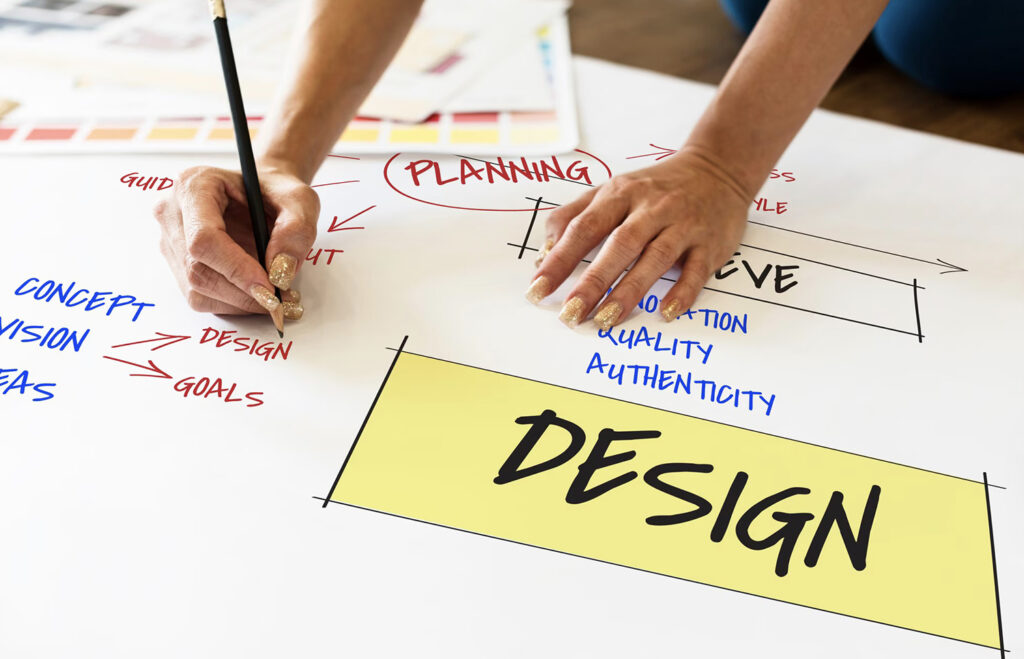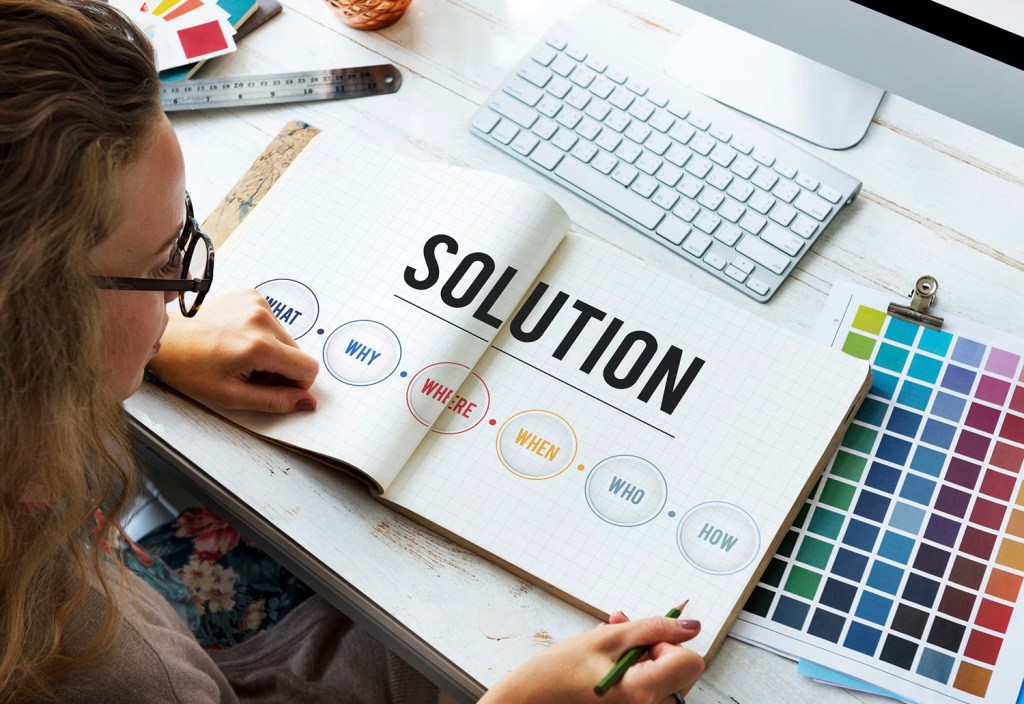Updated: Jan 02, 2024 By: Dessign Team

What is experience design?
As someone who enjoys good design, I find myself constantly wondering about the importance of experience design. Put simply, experience design is all about how users interact with a product or service.
In this section, we'll unpack the core meaning of experience design — what it is, what it encompasses, and how it differs from other design fields.
From there, we'll explore the exciting and varied applications of experience design, examining its impact in industries ranging from healthcare to hospitality.
Understanding the core meaning of experience design

Experience design involves designing a memorable, engaging, and meaningful customer experience by incorporating various factors such as emotions, psychology, aesthetics, and usability. It refers to creating valuable experiences that customers cherish while interacting with the products or services of a company. Experience design is not merely limited to the surface-level appearance of products but rather encompassing every touchpoint of the customer journey.
When we talk about understanding the core meaning of experience design, it means comprehending how customers perceive a product or service through their senses. Experience designers focus on creating delightful and unforgettable experiences for customers. They consider the entire end-to-end journey of a customer from the first interaction with a company until they become loyal customers or advocates.
Additionally, they closely study human behavior, interactions, emotions, and expectations to ensure that every aspect of the customer's journey is designed thoughtfully. Good experience design can result in higher engagement rates and brand loyalty from customers leading to increased revenue for businesses.
To truly understand the core meaning of experience design thinking requires human-centered thinking which puts people at center-stage in designing experiences that respond empathetically to user needs while taking care to engage effectively across all channels and touchpoints without disrupting or degrading overall user satisfaction.
One example which reflects this approach quite well can be seen in app designs – an experience designer will take into account various variables like user intent, accessibility considerations (for visually impaired users), UI/UX best practices across different platforms (iPhone vs Android), etc., before designing an unforgettable app experience.
Exploring the different applications of experience design in various industries

Experience design has countless applications across industries. It is about creating a holistic experience for customers that is memorable, intuitive, and enjoyable. In the field of healthcare, experience design ensures that patients feel comfortable and supported at every step of their journey.
For retail businesses, it enhances the shopping experience with personalized recommendations and seamless checkout processes. In the travel industry, experience instructional design can make journeys more convenient and entertaining by providing useful information and engaging content along the way.
Experience design also plays a vital role in hospitality, where it shapes visitors' overall perception of a brand. By considering all touchpoints between guests and staff, hotels can create an unparalleled guest experience that fosters loyalty and repeat business.
Additionally, in the world of digital media, designers incorporate experience principles to develop engaging websites and apps that keep users coming back. Overall, exploring the different applications of experience design in various industries is essential to enhancing customer satisfaction and ultimately driving revenue growth.
It's important to note that designing successful experiences requires human-centered thinking. This involves understanding user needs and behaviors before designing products or interfaces which meet them. By centering on people first, businesses can craft meaningful experiences that resonate with individuals on an emotional level- rather than simply offering features or technical capabilities.
Experience design is the driving force behind emotional connections with customers, making it an essential component of any successful business strategy.
Why is experience design important?

As an experience designer, it's crucial to understand why experience design is important, not just from a business standpoint but for enhancing customer satisfaction. When designing an experience, it's essential to consider the impact it will have on customer emotions.
Providing a positive and engaging experience can lead to increased customer loyalty and higher conversion rates. Additionally, having quality experience design can set you apart from your competitors and give you an edge in the market. So, it's not just about creating something that looks great on paper, but it's also about designing something that leaves a lasting impact on the customer.
Considering the impact of designing an experience on customer emotions
Experience design has a significant impact on customer emotions. The process of designing an experience involves creating a series of touchpoints that help customers interact positively with a business. By doing so, businesses can create memorable and meaningful experiences that leave a lasting impression on customers' emotions.
These positive emotions contribute to customer loyalty and repeat business. Therefore, considering the impact of designing an experience on customer emotions is critical for any business looking to succeed in today's competitive market.
Additionally, businesses need to consider how their brand values align with customer needs and expectations. This alignment ensures that customers feel valued and understood throughout every interaction with the business.
Pro tip: Take the time to research your target audience's preferences and behaviors to better understand their emotions and needs when designing experiences.
Good experience design is like a good joke – it's all about the delivery.
Highlighting the significance of having quality experience design

Quality experience design is of utmost importance in creating a positive impact on customer emotions. It involves designing thoughtful and intuitive interactions with users across all touchpoints, leading to increased customer satisfaction and loyalty. By highlighting the significance of having quality experience design, businesses can cater to the evolving demands of today's customer-centric world, differentiating themselves from their competitors.
Effective experience design involves creating experiences that are memorable and engaging, catering to the needs of consumers while ensuring alignment with business objectives. Such designs are aimed towards emotional connectivity with customers, tapping into their emotions to create a relationship that transcends mere transactions. Providing such an experience carries crucial weight for the success of a business.
Beyond good design practices, it's imperative to have human-centered thinking when crafting user experiences. Understanding the user is crucial in delivering relevant content that differentiates businesses from competitors. It's also important to align technology choices with business goals for effective implementation of quality experiences.
An emphasis on high-quality experience design forces companies to think beyond features alone and place greater focus on consumer expression through interaction without being distracted by trends or automations. Their efforts instead should be focused solely on making such interactions more seamless and effective.
In summary, highlighting the significance of having quality experience design means creating meaningful interactions that deliver rich experiences providing emotional connectivity with customers. Ensuring human-centered thinking processes throughout encourages better alignment between companies' use of technology and their business goals which ultimately drives better end-user outcomes. Companies should incorporate feedback loops during design iterations enabling deeper insights into what drives engagement, resulting in more informed decisions in later phases of a product's lifecycle.
Designing experiences without human-centered thinking is like serving a meal without considering the taste buds of the person eating it.
What to think about when it comes to designing experiences
As an experience designer, my approach to designing experiences involves going beyond simply creating a visually appealing product or service. In this section, I want to share my perspective on what to consider when designing experiences.
First and foremost, the importance of human-centered thinking cannot be overstated. It’s crucial to keep in mind the needs and desires of the end-users, and design experiences that cater to them. Additionally, designing experiences instead of just features has a significant impact not only on user satisfaction but on the entire business bottom line.
And finally, technological advancements offer a wide range of opportunities to elevate the user experience, and we must embrace these opportunities to create compelling experiences for our users.
Emphasizing the importance of human-centered thinking in designing experiences

Designing experiences that cater to the needs of customers is critical in today's world to ensure customer satisfaction. This approach entails putting the attention on human-centered thinking in designing experiences that enable users to get the most out of their interactions with a product or service.
By using this approach, it is possible to design experiences that help improve customer engagement and foster an emotional connection with your brand.
Organizations must recognize that human-centered thinking generates value for both internal and external stakeholders. This approach requires a thorough understanding of what customers want and need from their user experience, which helps organizations create meaningful relationships with their audiences. Rather than focusing solely on feature design, UX designers should focus more on building empathy with users to develop effective strategies that address their core needs.
A crucial aspect of developing a user-centric experience is adopting a continuous loop of testing and analyzing the outcomes of implemented design decisions. Doing so will ensure that designers are aware of how users interact with their designs – from initial sketches to finalized interfaces. Data gathering is critical as it provides actionable insights into where improvements may be required, enabling teams to abandon unhelpful features or aspects early.
Pro Tip: When designing experiences, it's essential to keep in mind Manfred Clynes' “Sentics” theory, which illustrates the correlation between facial expressions and emotions. By understanding Sentics' implications for user feedback loop iteration analyses done on usable products or systems, designers can better analyze users' emotional reactions towards specific designs resulting in user-friendly designs.
Designing experiences, not features, is like giving customers a memorable journey instead of just a new car.
Discussing the impact of designing experiences, not features, on the entire business
Designing experiences that prioritize user experiences over features has a significant impact on the success of an entire business. Users tend to abandon products or services that do not provide them with memorable experiences and will choose companies that offer delightful experiences. Therefore, businesses must focus on how they can create valuable memories for their users by understanding their needs, context, and behavior through research and design thinking methodologies.
Incorporating user experience design decisions into product development results in high customer satisfaction rates, increased loyalty, and advocacy. It also generates more revenue with fewer resources spent on marketing because customers are keen to share their good experiences with friends and family, creating a ripple effect.
Creating delightful experiences requires going beyond the basics of feature implementation. Instead, businesses must consider factors such as touchpoints, brand consistency, accessibility, responsiveness, and human-centered design principles. They should design products or services in a way that takes into account all of these aspects while keeping an eye on the bigger picture of customer satisfaction.
By prioritizing experience design over features, businesses can design products or services as benefits for both end-users internally. For instance, when Apple launched its iPod, what made it successful was not only the features but rather the overall music listening experience it provided. People were attracted to Apple's iPods not only because they could store a large quantity of songs but also due to its design aesthetic that matched nicely with iTunes which gave them a top-notch listening experience.
Technology is not the solution, but rather the tool, to crafting truly immersive and unforgettable experiences.
Addressing the role of technology in designing great experiences
The incorporation of technology is crucial when addressing the role of technology in designing exceptional experiences. To create great experiences, each aspect must be carefully designed and evaluated from a user-centered perspective.
Technology can enhance or detract from user experience, so it is important to select the right technology that aligns with user needs. Advanced technologies have enabled organizations to personalize their offerings and tailor them to individual users' preferences based on their data.
This approach has been successful in industries such as e-commerce, where Amazon's recommendation algorithm has transformed purchasing behavior and created a personalized shopping journey for customers.
In designing exceptional experiences using technology, it is imperative to prioritize privacy concerns and security protocols—not just functionality.
As design continues to move towards automation, balancing the benefits of AI with human input requires careful consideration. While AI enhances speed and accuracy, resulting in faster user journeys, it can also remove elements of human touchpoints that create emotional connections with users. For instance, chatbots developed for customer service purposes may struggle to display empathy without pre-programmed responses—a challenge that traditional communication methods such as call centers overcome through direct interactions between humans.
In an increasingly digital world where customer expectations are constantly evolving, identifying key touchpoints through which companies can deliver exceptional experiences requires constant reevaluation and adaptation processes. This identifies the importance of cross-functional teams working closely together throughout digital transformation journeys whilst prioritizing end-users' perspectives.
A global online retail marketplace revamped its mobile application using machine learning algorithms that personalized offers to each customer depending on their browsing pattern history within 10 seconds of opening a mobile app. After incorporating this technology into its mobile app interface, the organization recorded a 30% increase in monthly sales revenue than before with a net promoter score (NPS) improvement by 22 points than what it was initially before implementing technology-driven personalization features—showcasing how addressing the role of technology in designing great experiences can result in higher satisfaction levels for customers while exponentially increasing organizations' profits.
Conclusion: The importance of experience design in today's customer-centric world.
In today's world, where customers are at the center of every business, it is crucial to understand the importance of experience design. The success of any product or service is defined by the experience it delivers. Experience design ensures that the overall interaction of the customer with the product or service is pleasant, memorable and emotionally satisfying. It is not only about creating a beautiful interface but making sure that the interface functions smoothly, ensuring a delightful experience for the user.
Experience design has gained immense importance in recent times due to the increasing number of products and services delivered digitally. With the ever-increasing competition, companies must differentiate their offerings and create a compelling user experience. Experience design takes into account the user's expectations and needs, solving their problems and providing a seamless experience. In the present customer-centric world, where customer satisfaction is key, experience design plays a crucial role.
A well-designed experience can be a success mantra for any business. It has become a competitive advantage, drawing more customers, and retaining them. Experience design is not a one-time task, but an iterative process that involves continuous improvements and updates. Once companies realize the significance of experience design, they should strive to provide a consistent and enjoyable experience across all platforms to guarantee customer loyalty.
To achieve this, companies should focus on developing better user interfaces, keeping usability at the forefront. They should also adopt a user-centered approach, prioritizing their needs over the technology used. The use of customer research and feedback can significantly enhance the design process. Companies should also ensure that their products or services align with the brand values and promise. Finally, a seamless and consistent experience across all touchpoints can aid in maintaining customer loyalty.
FAQs about What Is Experience Design
What is experience design, and why is it important?
Experience design is an approach that centers on people’s experiences to drive the design and features of products, processes, environments, and strategies. It is a way of designing experiences that center on users' needs, feelings, contexts, and mindsets.
Focusing on experience means more than making customers' lives easy or delightful, but shaping the way they feel. Quality experience design means every interaction is well considered and all is coordinated and strategically implemented to be consistent.
What should I consider when designing experiences?
When designing experiences, you should think about human-centered thinking as a requirement. Centering on customers, not your business or product, will likely impact how your entire organization works – most notably, your internal culture.
Your technology choices also matter, as designing a great experience is about more than what you – or your customers – can see. Navigation menus, workflows, and search filters can impact your users' experience.
How does centering on customers affect my whole business?
Centering on customers, not your business or product, will likely impact how your entire organization works – most notably, your internal culture. Decisions that were once siloed will now require a more holistic approach. What was once a marketing problem is reframed as a staff-wide problem because experiences are department agnostic.
The thing to remember is that customers don't know, or care about, your organizational structure or culture. They care about themselves, so if you're going to care about them, too, then you will likely need to change how everyone internally works.
What is the role of technology in designing experiences?
The technology that powers menus and features is crucial to all aspects of what users experience. The technology should be fast and efficient, allowing for designing and building the features and interactions needed in flexible ways. If your technology is slow, users will use something else.
How do I know what my customers want and need?
To know your users and listen to their needs, you need to consider their contexts and environments. A good example is a bank that uses human-centered thinking to anticipate customers' needs by front and center on the main screen is the balance, and a big button to “deposit check.”
What is the bottom line when it comes to experience design?
No matter how much you prioritize it (or not), customers will have an experience with your service, product, or brand. Every web page, social media interaction, or piece of software that is needed to take them from point A to point Z will elicit an emotion – what that emotion is, is entirely up to you. If you practice Experience Design, you're literally selling an experience.






